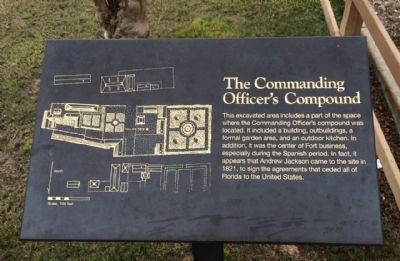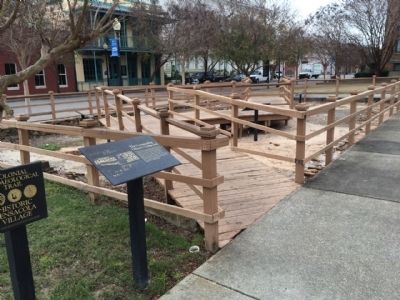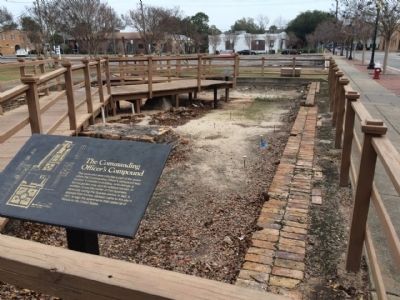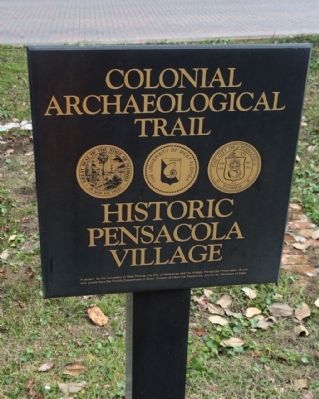Pensacola in Escambia County, Florida — The American South (South Atlantic)
The Commanding Officer's Compound
Erected by the City of Pensacola, the University of West Florida & the Historic Pensacola Preservation Board.
Topics and series. This historical marker is listed in these topic lists: Colonial Era • Forts and Castles • Settlements & Settlers. In addition, it is included in the Former U.S. Presidents: #07 Andrew Jackson series list. A significant historical year for this entry is 1821.
Location. Marker has been permanently removed. It was located near 30° 24.522′ N, 87° 12.754′ W. Marker was in Pensacola, Florida, in Escambia County. Marker could be reached from the intersection of East Zarragossa Street and East Jefferson Street. Located behind the T.T. Wentworth Florida State Museum. Touch for map. Marker was at or near this postal address: 330 East Jefferson Street, Pensacola FL 32502, United States of America.
We have been informed that this sign or monument is no longer there and will not be replaced. This page is an archival view of what was.
Other nearby markers. At least 8 other markers are within walking distance of this location. British Period (here, next to this marker); Colonial Cooking (a few steps from this marker); Second Spanish Period (a few steps from this marker); First Spanish Period (a few steps from this marker); Wells and Cellars (a few steps from this marker); Archaeology in Pensacola (a few steps from this marker); American Period (a few steps from this marker); a different marker also named Commanding Officer's Compound (a few steps from this marker). Touch for a list and map of all markers in Pensacola.
Related markers. Click here for a list of markers that are related to this marker.
Also see . . . Colonial Archaeological Trail. (Submitted on January 7, 2015, by Mark Hilton of Montgomery, Alabama.)
Additional commentary.
1. Markers replaced with interpretive markers.
All the markers on this page have been replaced with newer interpretive markers, in some cases combining information and adding new information. The whole plaza has been renovated and no longer looks the same.
— Submitted October 10, 2021, by Mark Hilton of Montgomery, Alabama.
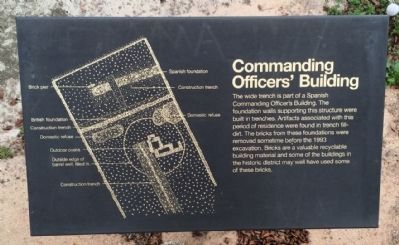
Photographed By Mark Hilton, January 1, 2015
5. The Commanding Officers' Building
The wide trench is part of a Spanish Commanding Officer's Building. The foundation walls supporting this structure were built in trenches. Artifacts associated with this period of residence were found in trench fill-dirt. The bricks from these foundations were removed sometime before the 1993 excavation. Bricks are a valuable recyclable building material and some of the buildings in the historic district may well have used some of these bricks.
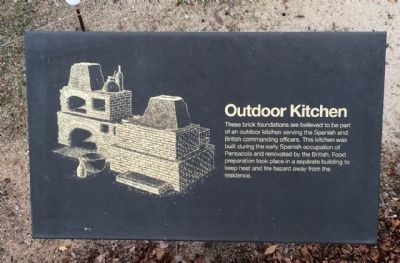
Photographed By Mark Hilton, January 1, 2015
6. Outdoor Kitchen
These brick foundations are believed to be part of an outdoor kitchen serving the Spanish and British commanding officers. This kitchen was built during the early Spanish occupation of Pensacola and renovated by the British. Food preparation took place in a separate building to keep heat and fire hazard away from the residence.
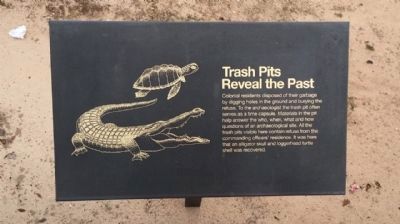
Photographed By Mark Hilton, January 1, 2015
7. Trash Pits Reveal the Past
Colonial residents disposed of their garbage by digging holes in the ground and burying the refuse. To the archaeologist the trash pit often serves as a time capsule. Materials in the pit help answer the who, when, what and how questions of an archaeological site. All the trash pits visible here contain refuse from the commanding officers' residence. It was here that an alligator skull and loggerhead turtle shell was recovered.
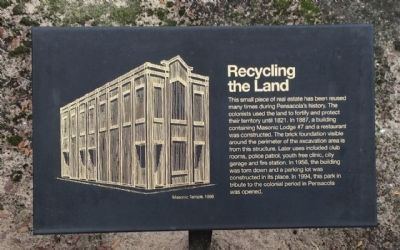
Photographed By Mark Hilton, January 1, 2015
8. Recycling the Land
This small piece of real estate has been reused many times during Pensacola history. The colonists used the land to fortify and protect their territory until 1821, In 1887, a building containing Masonic Lodge #7 and a restaurant was constructed. The brick foundation visible around the perimeter of the excavation area is from this structure. Later uses included club rooms, police patrol, youth free clinic, city garage and fire station. In 1956, the building was torn down and a parking lot was constructed in its place. In 1994, this park in tribute to the colonial period in Pensacola was opened.
Credits. This page was last revised on October 10, 2021. It was originally submitted on January 7, 2015, by Mark Hilton of Montgomery, Alabama. This page has been viewed 563 times since then and 14 times this year. Photos: 1, 2, 3, 4, 5, 6, 7, 8, 9. submitted on January 7, 2015, by Mark Hilton of Montgomery, Alabama. 10. submitted on October 10, 2021, by Mark Hilton of Montgomery, Alabama.
